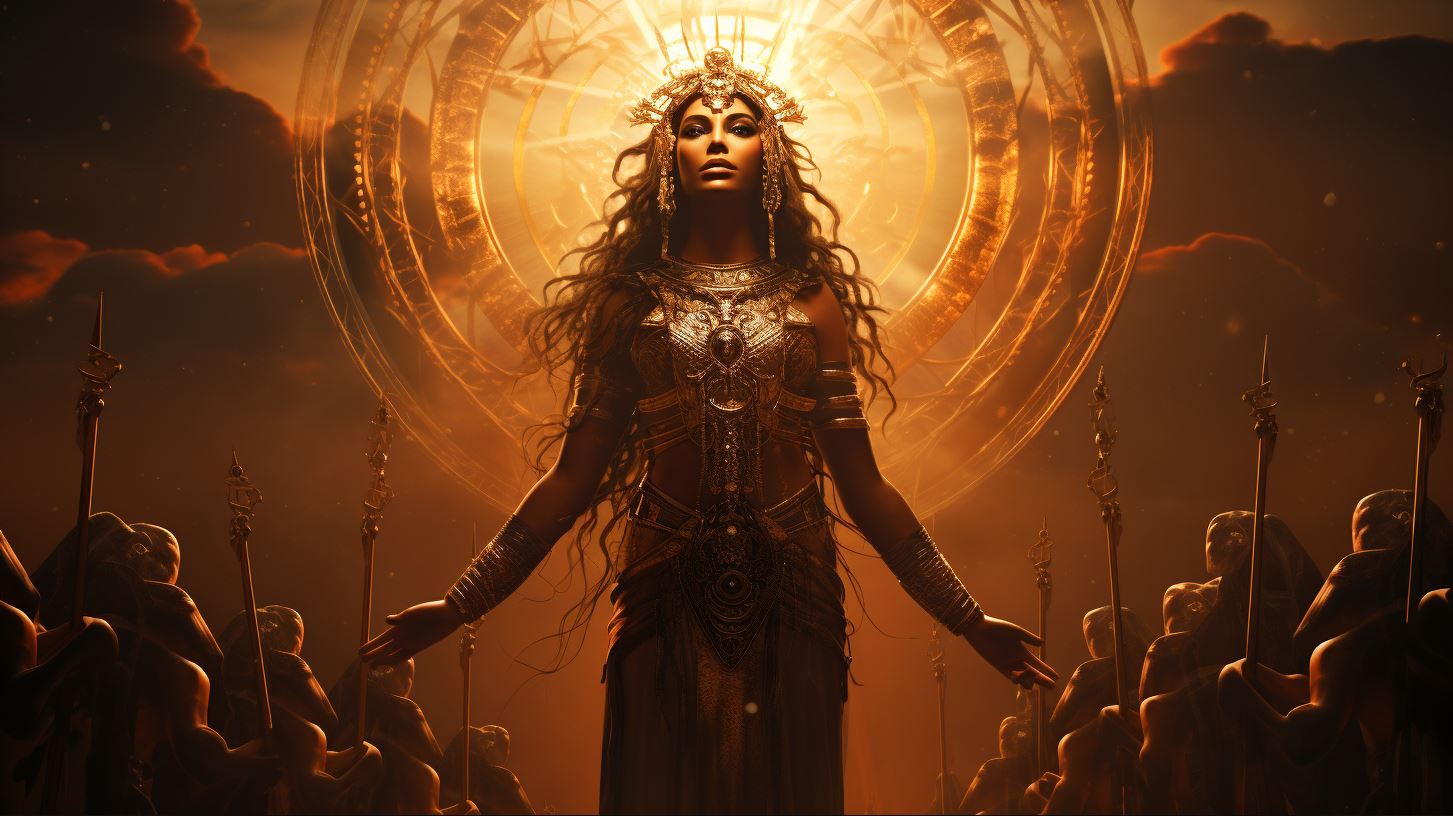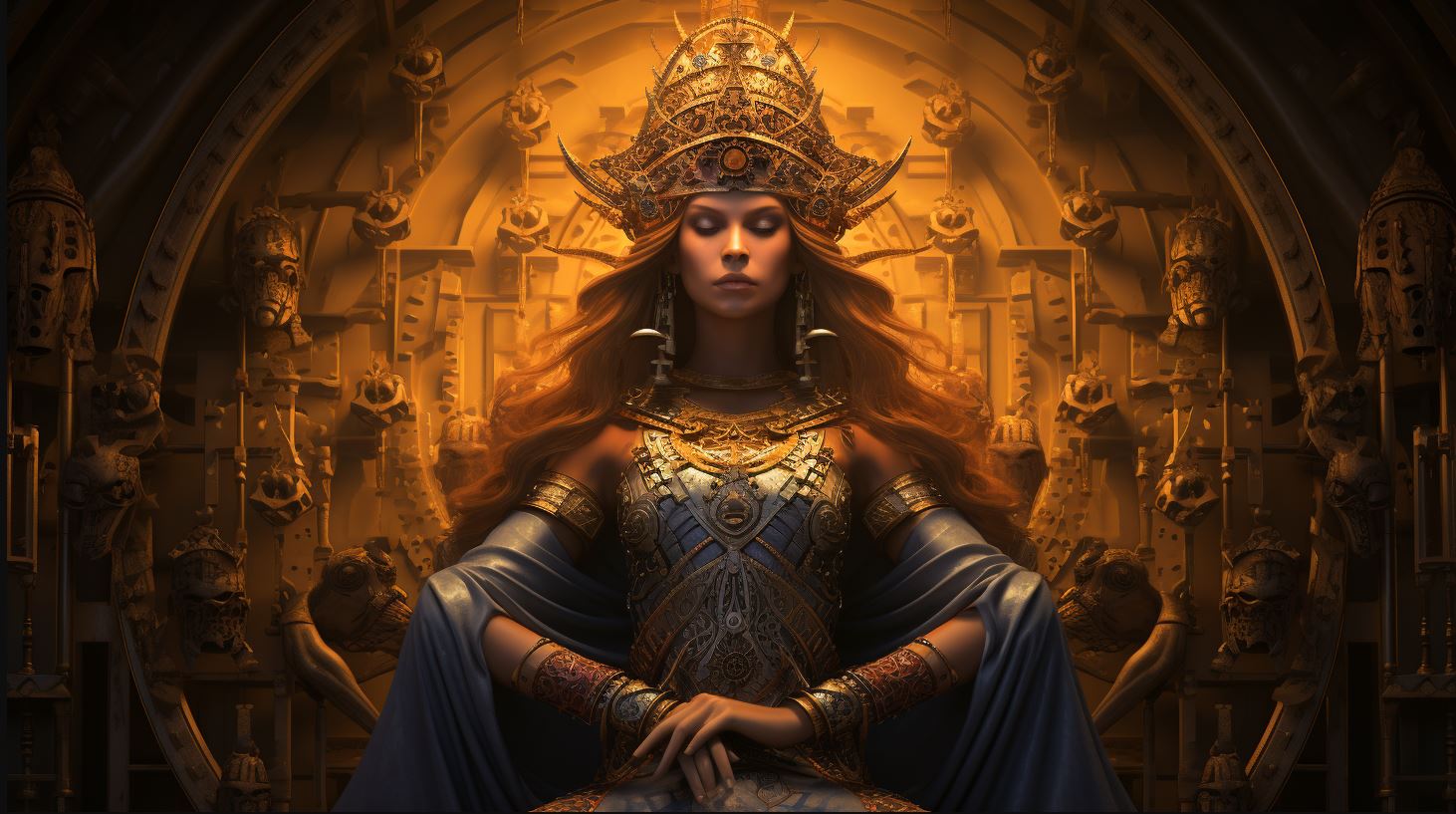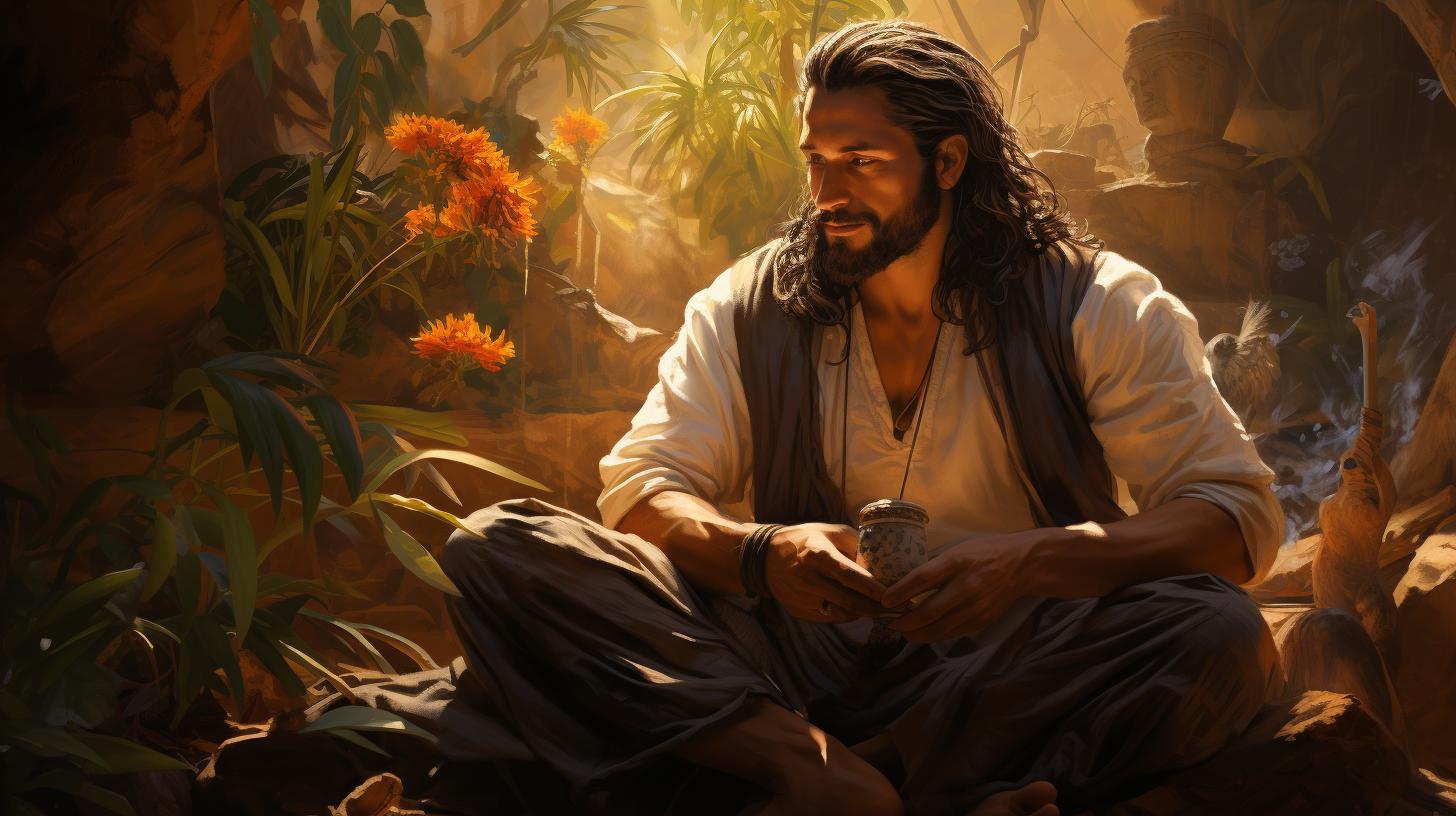Canaanite Goddess Asherah: Unveiling the Sacred Feminine in Ancient Israel

The Canaanite goddess Asherah was a widely worshiped figure in the ancient Near East. Often depicted as a nude female with exaggerated breasts and flowing garments, she was associated with the sea and played a role in the struggle against the god Baʾal.
In ancient Israel, her worship was mentioned in the Bible, with sacred groves and poles dedicated to her being ordered to be destroyed. Scholars debate whether she was part of a polytheistic religion or considered the feminine aspect of Yahweh.
Archaeological evidence supports her worship, but her cult eventually declined with the rise of monotheism.
The Canaanite Goddess Asherah: Unveiling Her Ancient Origins
The Canaanite Goddess Asherah holds a significant place in the ancient religious traditions of the Near East. Understanding her ancient origins requires delving into the historical background of ancient Canaanite religion, exploring Asherah’s role in the Canaanite pantheon, and examining her depiction and symbolism in ancient artifacts.
Historical Background of Ancient Canaanite Religion
The study of Asherah begins with a deeper understanding of the historical context in which she was worshipped. Ancient Canaanite religion flourished in the regions comprising modern-day Israel, Palestine, Lebanon, and parts of Jordan and Syria.
This polytheistic belief system revolved around a pantheon of gods and goddesses, with Asherah standing as one of the central deities.
Asherah’s Role in the Canaanite Pantheon
Within the Canaanite pantheon, Asherah held various roles and attributes. She was often regarded as the consort of the supreme god El and played a vital role in the divine assembly.
Asherah was seen as a mother figure and associated with fertility, nurturing, and the natural world. Her influence extended to aspects of life such as love, family, and the flourishing of crops.
Asherah’s Depiction and Symbolism in Ancient Artifacts
The depiction of Asherah in ancient artifacts offers valuable insights into her physical appearance and symbolic representations. Represented as a nude female figure with exaggerated breasts and a flowing gown, Asherah’s iconography emphasized her fertility and nurturing qualities.
Artistic renderings of Asherah frequently portrayed her holding a sacred tree or serpent, symbolizing her connection to nature and the divine.
The artifacts reveal the reverence with which Asherah was regarded and the role she played in ancient Canaanite society.
Sacred groves dedicated to her were discovered, highlighting her prominent role in Israelite religious practices.
Scholars’ Perspectives on Asherah’s Role in Israelite Religion
The role of Asherah in Israelite religion has been a source of scholarly discussions. Some argue that Asherah was worshipped as a separate deity alongside Yahweh and other gods, indicating a polytheistic belief system.
Others propose that Asherah may have been viewed as the feminine aspect of Yahweh, representing the nurturing and divine feminine qualities. This perspective suggests a monotheistic framework with Yahweh as the central deity.
Asherah’s Representation in the Hebrew Bible
The representation of Asherah in the Hebrew Bible adds another layer of complexity to the debates surrounding her role in Israelite religion. In the texts, Asherah’s worship is often criticized and condemned, with references to the destruction of her sacred groves and poles.
Scholars interpret these passages as evidence of efforts to suppress and eradicate her worship as the Israelite religion embraced monotheism.
While the Hebrew Bible portrays Asherah in a negative light, it is important to consider the potential biases and motivations behind these depictions.
The male-dominated religious establishment and the rise of monotheism may have led to the denigration and marginalization of the divine feminine, including Asherah. The Hebrew Bible serves as a reflection of these societal and religious shifts rather than an objective account of Asherah’s significance in ancient Israelite religion.
The Relationship between Asherah and Yahweh
The connection between Asherah and Yahweh in ancient religious beliefs has intrigued scholars and sparked debates. This section delves into the intricate nature of their relationship, addressing Asherah as the consort of El and Yahweh, her significance as a mother goddess, and the suppression of her worship leading to the rise of monotheism.
Asherah’s role as the consort of both El and Yahweh is a subject of scholarly discussion. She was recognized as an important companion to both deities, symbolizing the divine feminine within their pantheon.
This aspect of Asherah highlights her significant position in ancient Canaanite and Israelite religious beliefs, where she was revered alongside the male gods.
The Significance of Asherah as a Mother Goddess
As the mother of 70 or 77 divine sons, Asherah held immense importance as a mother goddess figure.
Suppression of Asherah’s Worship and the Rise of Monotheism
The decline of Asherah’s cult and the subsequent suppression of her worship coincided with the rise of monotheistic beliefs. The Hebrew Bible chronicles efforts to eliminate sacred groves and poles dedicated to her worship, suggesting a deliberate attempt to erase her influence.
This suppression played a significant role in the transition towards monotheistic Yahwism, where the worship of a single male deity became the dominant religious practice.
Despite Asherah’s suppression, her significance in ancient Canaanite and Israelite religion cannot be ignored.
The complex relationship between Asherah and Yahweh sheds light on the diverse religious beliefs and practices of the time, emphasizing the role of femininity in ancient divinity and the subsequent cultural shifts brought upon by monotheistic ideologies.
Archaeological Evidence of Asherah’s Cult
In exploring the ancient cult of Asherah, various forms of archaeological evidence shed light on her worship and significance. These findings contribute to our understanding of the Canaanite religious practices and the role of Asherah in the ancient Near East.
Inscriptions, Figurines, and Artwork Depicting Asherah
One aspect of the archaeological evidence includes inscriptions, figurines, and artwork that provide representations of Asherah. Inscriptions found in ancient Canaanite sites mention her name and indicate her presence in religious rituals and ceremonies.
These inscriptions often depict her as a prominent deity, emphasizing her divine status within the pantheon.
Figurines of Asherah have been discovered in various archaeological excavations. These figurines, made of clay or stone, depict a nude female figure with exaggerated breasts and flowing gown, symbolizing her fertility and nurturing aspects.
The intricate details and craftsmanship of these figurines demonstrate the significance of Asherah’s cult in the ancient societies.
Additionally, artwork found on pottery, jewelry, and other artifacts from ancient Canaanite and Israelite contexts provide visual representations of Asherah.
These depictions highlight her attributes, such as fertility and divine authority, further corroborating her importance in religious practices.
Asherah’s Sacred Groves and Poles
Another key archaeological element related to Asherah’s cult is the discovery of sacred groves and poles dedicated to her worship. These sacred groves were designated spaces where rituals and ceremonies honoring Asherah took place.
They were often located near temples or within natural settings such as forests.
The sacred poles, known as “asherim,” were sacred symbols associated with Asherah. These wooden poles or pillars were erected in her honor, and they represented her presence or connection to the earthly realm.
Excavations have unveiled the remnants of these poles, providing tangible evidence of Asherah’s cultic practices.
Comparison with Other Ancient Near Eastern Goddesses
Within the context of the ancient Near East, comparing Asherah with other goddesses is crucial in understanding her significance. An analysis of deities worshipped in neighboring regions reveals similarities and differences, shedding light on the unique aspects of Asherah’s cult.
For instance, comparing Asherah with the Canaanite goddess Anat highlights their distinct roles and attributes within the pantheon. Anat was associated with war and violence, while Asherah represented fertility and nurturing aspects.
Such comparative analysis provides insights into the complexities of ancient religious beliefs and practices.
Furthermore, exploring the connections between Asherah and other goddesses worshipped in Mesopotamia and Egypt allows for a broader understanding of her place within the ancient divine feminine landscape.
These comparisons provide valuable context and contribute to the overall understanding of Asherah’s cult in the broader religious milieu of the time.
Overall, the archaeological evidence of Asherah’s cult, including inscriptions, figurines, artwork, sacred groves, and comparisons with other goddesses, enhances our comprehension of her worship and significance in ancient Canaanite and Israelite religion.
These findings illuminate the religious practices, beliefs, and cultural context surrounding the worship of this enigmatic Canaanite goddess.
The Marginalization of the Divine Feminine
Throughout ancient and modern religions, the repression of feminine depictions has been a prevalent aspect. The concept of the divine feminine, represented in deities like Asherah, has been marginalized and suppressed.
The Repression of Feminine Depictions in Ancient and Modern Religions
Ancient and modern religious establishments have often favored masculine representations of the divine, relegating the feminine to secondary roles or outright erasing it. This marginalization can be seen in the denigration of goddesses like Asherah in biblical texts and subsequent religious traditions.
Historically, societies influenced by patriarchal systems have aimed to maintain male-dominated power structures by suppressing the significance of goddess worship and the recognition of feminine spirituality. This repression has perpetuated a belief in the superiority of masculine qualities and diminished the importance of the divine feminine.
Impact on Women’s Status and Rights in Ancient Israelite Society
The marginalization of the divine feminine, including the worship of goddesses like Asherah, has had profound consequences for women’s status and rights in ancient Israelite society. By downplaying the significance of the feminine divine, women were relegated to subservient roles, and their voices and contributions were diminished.
As the worship of Asherah declined and monotheism took hold, the divine became increasingly associated with masculine attributes, reinforcing gender hierarchies and limiting women’s participation in religious and social spheres. The suppression of Asherah’s worship went hand in hand with the marginalization of women, perpetuating patriarchal structures and stifling opportunities for gender equality.
Rediscovering and Celebrating Asherah’s Legacy
Despite the efforts to suppress Asherah’s worship, her legacy and importance in ancient Canaanite and Israelite religion cannot be denied. In recent years, there has been a resurgence of interest in reconnecting with the divine feminine and celebrating the significance of Asherah.
- By acknowledging and honoring Asherah, individuals and communities are seeking to restore balance and inclusivity in their spiritual practices.
- Rediscovering Asherah’s presence allows for a reevaluation of traditional religious narratives, challenging male-dominated interpretations and reclaiming the divine feminine’s rightful place.
- Celebrating Asherah’s legacy is an act of empowerment for women and all those who have suffered under patriarchal systems, offering a renewed sense of identity, spirituality, and equality.
Acknowledging and embracing the divine feminine, as expressed through Asherah and other goddesses, contributes to a more holistic understanding of spirituality, history, and the sacred.
It opens doors for diverse interpretations and nurturing inclusive religious practices that honor the inherent worth and wisdom of both genders.
…




















